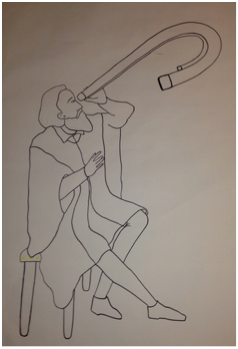Adaptive Programming: The “Space of Possibility”
Sara Mizuta Seavey, M.A., is a Senior Program Officer at FHI360 for the Mobile Solutions Technical Assistance and Research (mSTAR) project, where she works with USAID’s Digital Development Team to conceive, design, and test how real-time data systems can enable a more adaptive and participatory approach to development. She is passionate about systems thinking and participatory approaches to international development.
What does space travel have to do with international development?
Consider how NASA used and adapted every experiment, iteration, failure, and lesson from each project from Mercury, Gemini, and Apollo. NASA’s engineers and technical experts never focused on one solution — they knew there was never going to be one right answer. Those who sent people to the surface of the Moon embraced the fact that space travel was complex, unknown, and involved a variety of agents. They never assumed solutions: each challenge was unknown and contextually dependent. Perhaps most importantly, despite enormous political pressure, NASA’s team was given the authority and legitimacy to experiment.

Recently, I completed the intensive 10-week “Principles of Problem Driven Iterative Adaptation (PDIA): Building Capacity for Delivering Results” online course by Harvard University. The final assignment of the course was to watch a video and reflect on the journey and lessons learned from the U.S. Space Program’s Conquest of the Moon. While watching the video, it dawned on me: how NASA approached space exploration is an excellent analogy for how funders and implementers should iterate, experiment, and approach development.
In international development, we approach problems as challenges and opportunities. Problems are laid out in a “Request for Proposal” or “Request for Application.” This solution-driven approach to development is linear and mechanical. Like this image shared by Otto Scharmer, an economist and organization theorist, at FHI 360’s September 2015 “Leading from the Emerging Future” Challenge Conference depicts, our role as practitioners is not of some divine level puller that is outside of the system. In truth, as Otto and Peter Senge, author of The Fifth Discipline, argue, we are part of the system that we trying to change. We have the power to alter the operating structures from within.
Development is complex and messy. There is no one lever or gear to push or pull to fix our problems. In fact, new problems are often caused by past interventions. As my mentor, Paul Bundick, shared last summer on Devex, we cannot “reduce the complexity of our interconnected realities to simple, linear models that better fit our need to measure outcomes rather than to transform situations. We are learning how our mental constructs constrain our ‘space of possibility.’” It is our way of thinking that constrains us and inhibits transformative change.It is time for development professionals to see our role in the system and shift our mental modes to allow for the possibility that there are many possible outcomes. Often, development practitioners and funders focus on being prescriptive. Prescriptive norms are based off of best practice, which often ignores context and limits risk and experimentation as narrow rules must be followed. Prescriptive norms teach that there is one right way (or solution) to have a positive outcome.

Being problem driven, however, uses proscriptive norms, which force the actor to muddle through the problem, test, and pivot. Decisions are based off of specific country experience, which shows what hasn’t worked, but also allows for a larger space of possibility to explore options not yet tried or imagined. The proscriptive approach is more conducive for learning and adapting for funders and practitioners. It allows for them to work their way through the constraints and problems experienced in an evolutionary learning pathway to find an acceptable outcome for the context they are operating in. This is called adaptive programming.
Recent initiatives are calling for adaptive programming. USAID’s Collaborating Learning and Adapting (CLA), for example, allows funders and practitioners to expand their space of possibility or authorizing environment to experiment. I believe these initiatives will lead to better decision-making and ultimately better development work as development workers become problem-driven, lifelong learners whose decisions are based on direct experience. To implement adaptive programming, we can start by recognizing a locally felt problem and explore from there, using participatory methods and tools like the Ishikawa Diagram and design space matrix.
Adaptive programming calls for participation from a diverse set of stakeholders which provides actors — not necessarily experts — the authority and legitimacy to work toward solutions and exceptional evolved outcomes, like landing a man on the moon.



